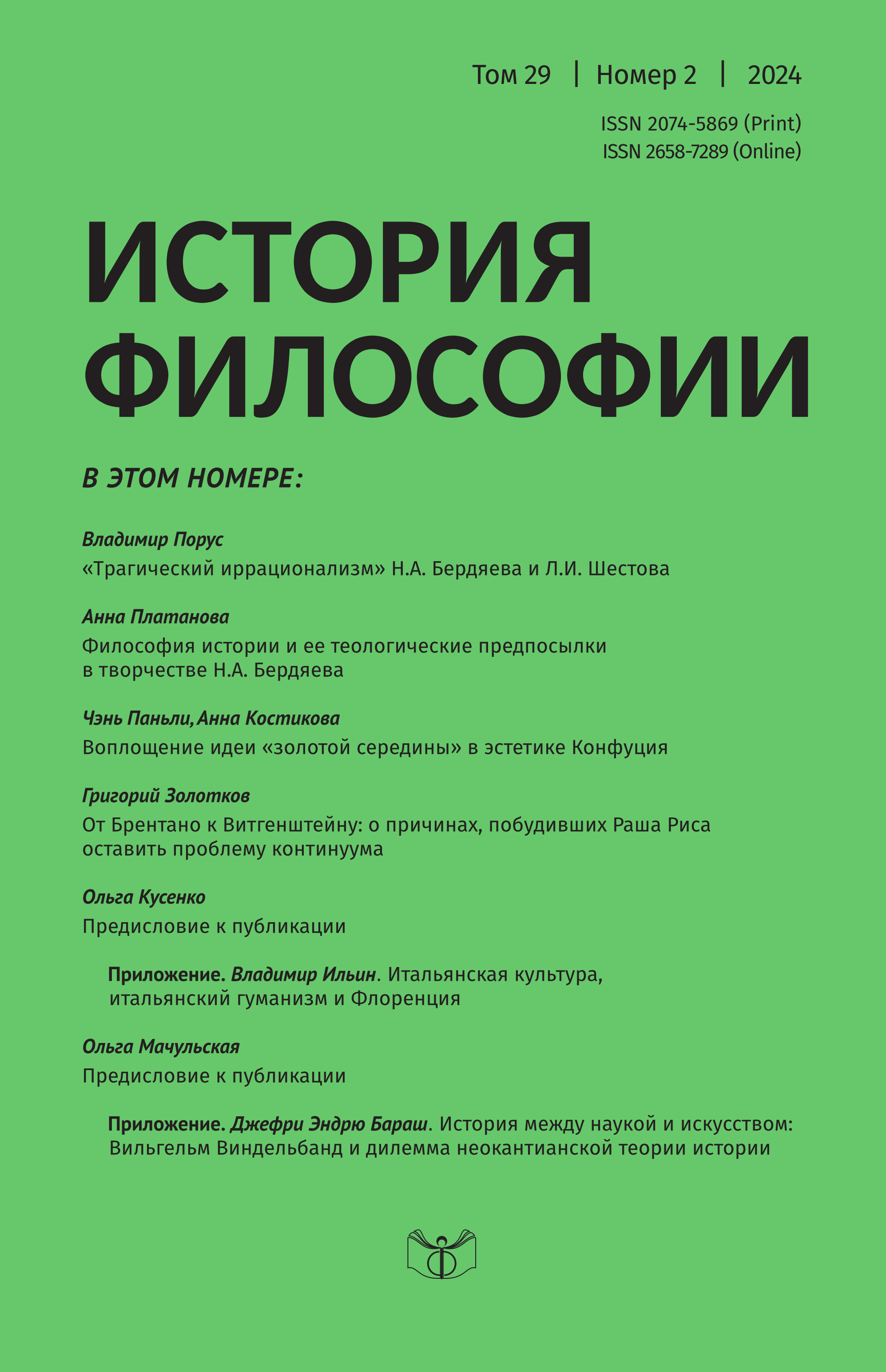From Brentano to Wittgenstein: What Forced Rush Rhees to Quit His Study of the Continuum?
DOI:
https://doi.org/10.21146/2074-5869-2024-29-2-76-87Keywords:
continuum, continuity, plerosis, philosophical therapy, F. Brentano, L. Wittgenstein, R. RheesAbstract
This paper discusses the reasons for Rush Rhees’ sudden cancellation of his study of the phenomenon of continuity. Before he became a follower of Ludwig Wittgenstein, Rhees studied the philosophy of Franz Brentano. In his unfinished PhD, Rhees developed Brentano’s phenomenological interpretation of continuity, more specifically, his theory of “plerosis”. Nevertheless, after Rhees aborted his work on continuum, he never returned to it or to Brentano’s philosophy. One of the last events leading up to this ending was the conversation between Rhees and Wittgenstein, which took place in 1938. The author of the article discusses the extent to which Wittgenstein’s reflections may have influenced Rhees’ rejection of Brentano’s philosophical approach and contributed to a fundamental rethinking of his earlier position. The hypothesis of the work is that Wittgenstein’s philosophy caused Rhees to become disillusioned with the phenomenological approach and the traditional way of posing philosophical problems.

